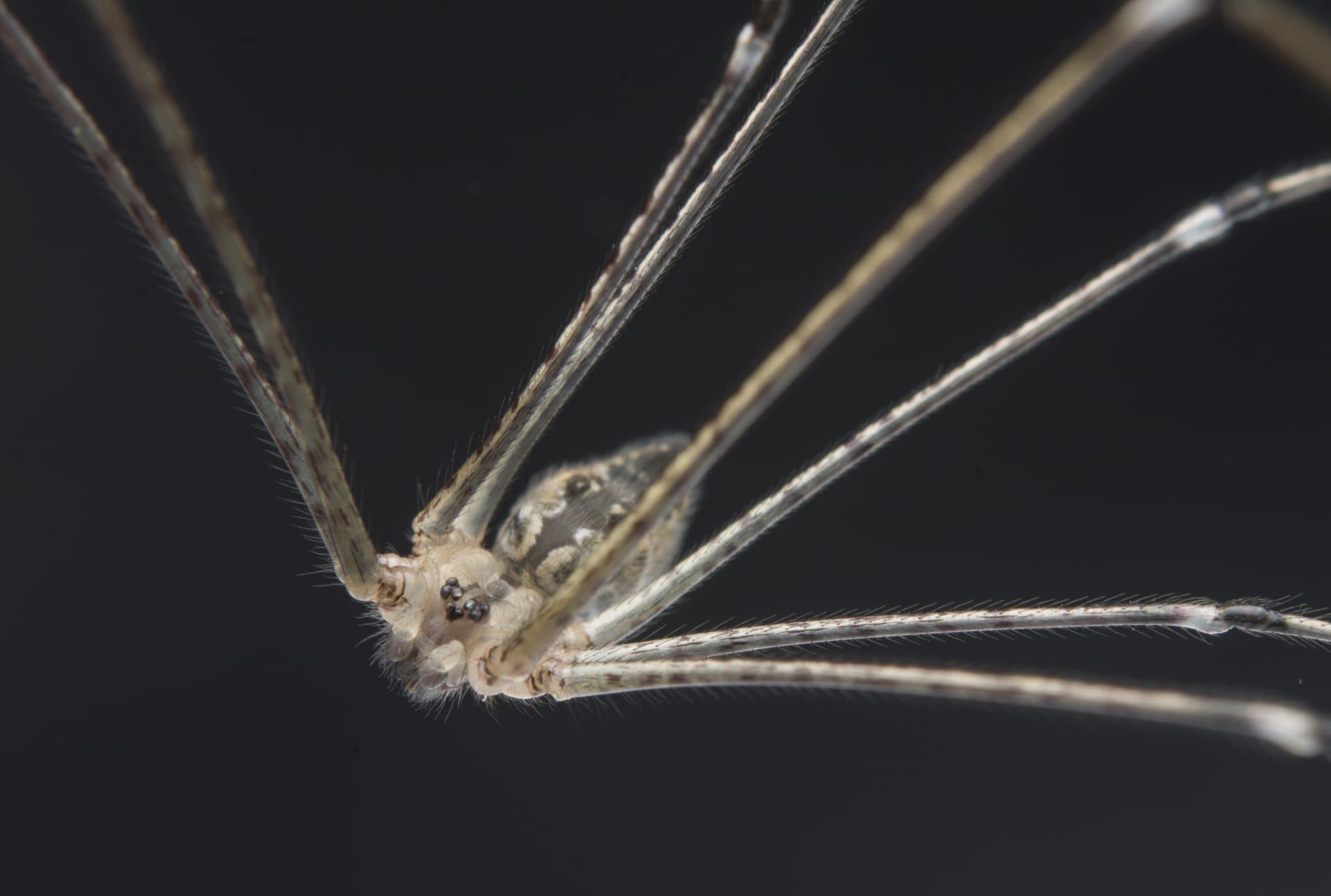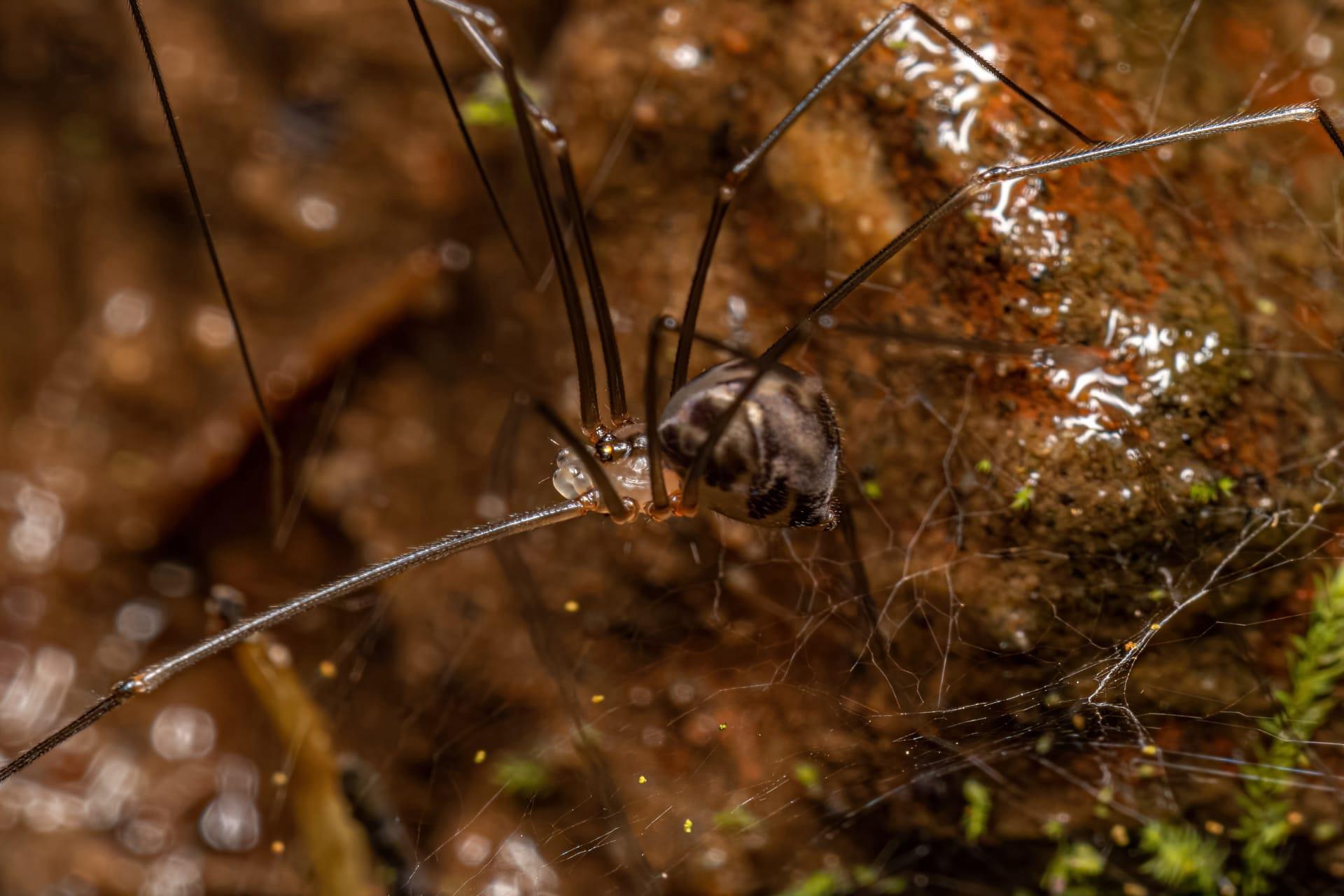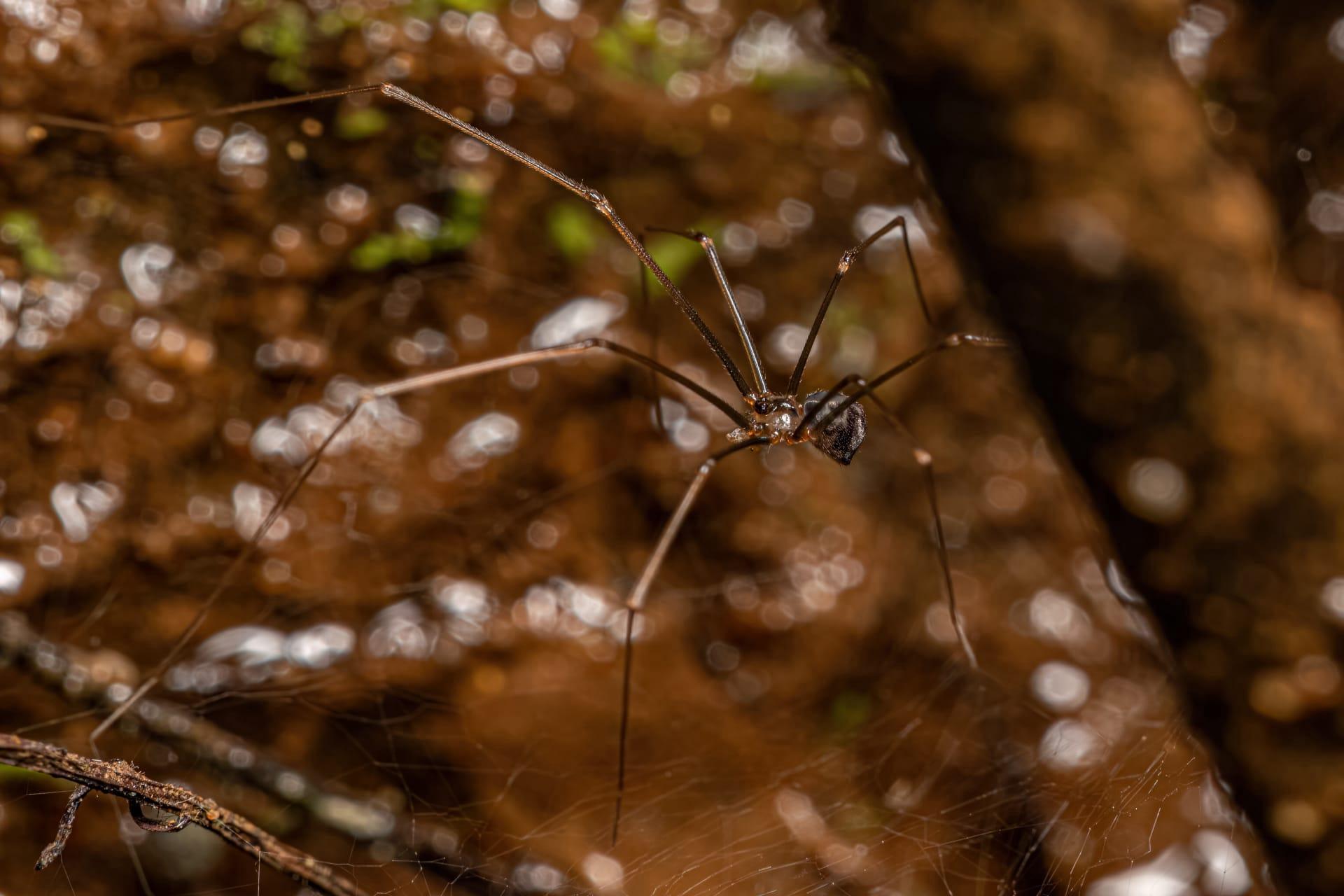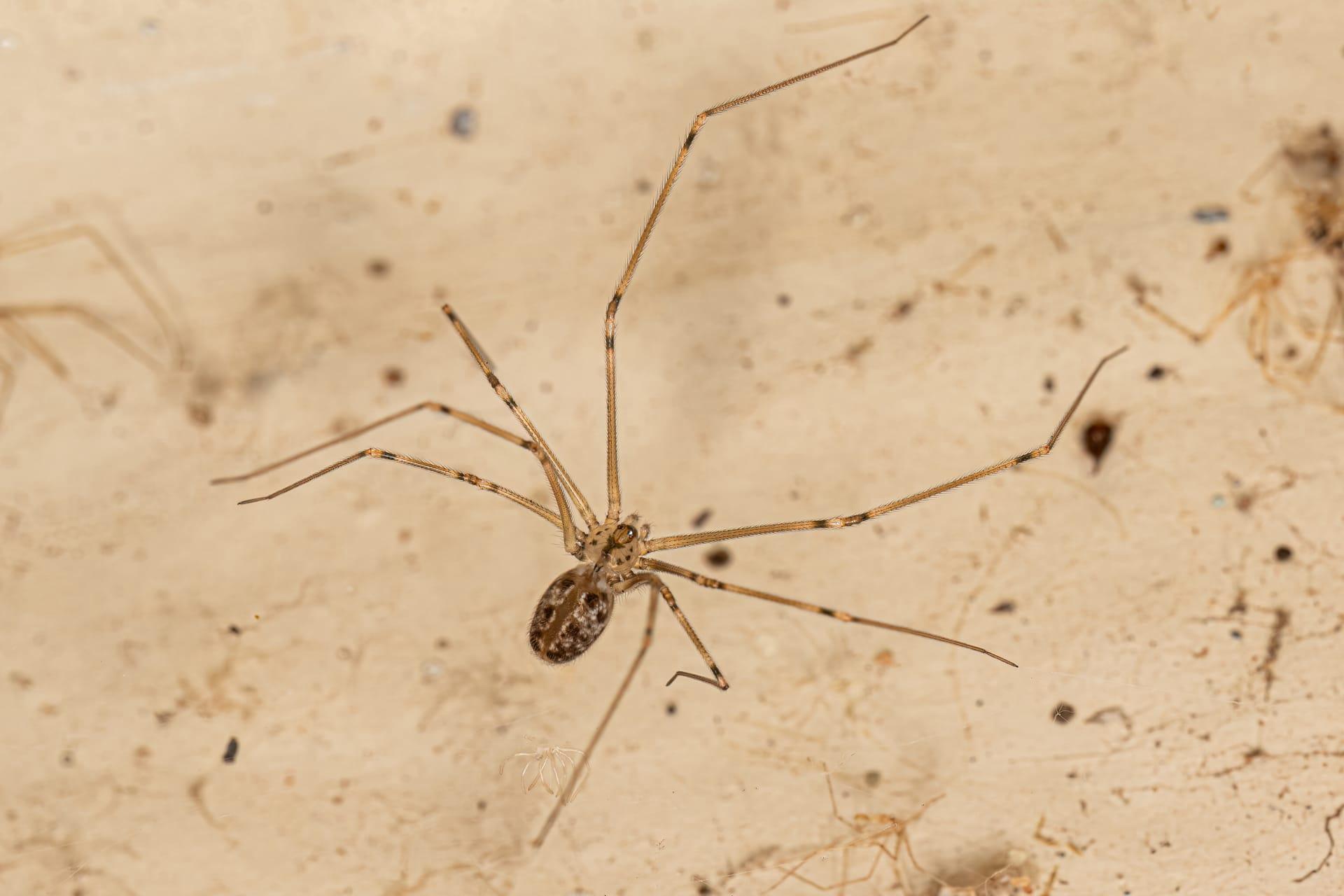Cellar Spider Characteristics
- Home /
- Mini Encyclopedia /
- Animal /
- Cellar Spider Characteristics
1
Cellar spiders, scientifically known as Pholcidae, boast a distinct, slender physique, with their bodies typically measuring between ¼ to ⅜ inches (6 to 9 mm) in length. However, it's their long, spindly legs, spanning up to 2 inches (5 cm), that make them instantly recognizable. These arachnids, with a lifespan ranging from 2 to 3 years, showcase a delicate balance of fragility and agility.
Among their most fascinating features is the cellar spider's ability to vibrate rapidly in their webs when threatened. This intriguing behavior, often termed as 'vibrating' or 'shuddering', serves as a defense mechanism, blurring their appearance to confuse predators and buy time for escape.

2
Question: Do cellar spiders pose a danger to humans?
Answer: Contrary to common myths, cellar spiders are harmless to humans. Their venom is specialized for subduing small insects, not large mammals like us. Additionally, their fangs are too weak to penetrate human skin effectively. So, while they might look a bit eerie with their long legs, they're essentially benign and even beneficial as they help control other insect populations.

3
Cellar spiders exhibit a unique locomotion style. They're not the quickest spiders, but their long legs allow them to cover significant distances with minimal effort. Their movement is often described as 'skittering' across their webs and surfaces, displaying a blend of awkward grace and precision.
When it comes to feeding, these spiders are classic opportunists. They primarily consume small insects, including flies, mosquitoes, and even other spiders. Their hunting method is passive yet effective: they wait in their irregular, messy webs for prey to become ensnared, then quickly immobilize them with venom.

4
The natural habitat of cellar spiders is quite varied. They are often found in dark, undisturbed areas like basements, cellars (hence their name), and garages. They prefer environments with high humidity and a stable temperature, which supports the presence of their prey.
Reproduction in cellar spiders involves a fascinating courtship ritual where the male plucks strands of the female's web to get her attention. After mating, the female lays several egg sacs, each containing up to 60 eggs. These sacs are carried by the female in her jaws until the spiderlings hatch, ensuring their protection.

5
Book: "The Secret World of Spiders" by James D. Harrison, published in the United States in 1998, provides a comprehensive overview of various spider species, including cellar spiders. Harrison, a renowned arachnologist, dives into their biology, behavior, and the ecological role they play, making it an informative read for enthusiasts and professionals alike.
Book: "Spiders: Architects of Intrigue" by Margaret Anderson, published in the UK in 2005, focuses on the architectural prowess of spiders in web-building. This includes a detailed exploration of cellar spiders, highlighting their unique web structures and survival strategies. Anderson's work is celebrated for its blend of scientific insight and engaging narrative, appealing to a wide range of readers.